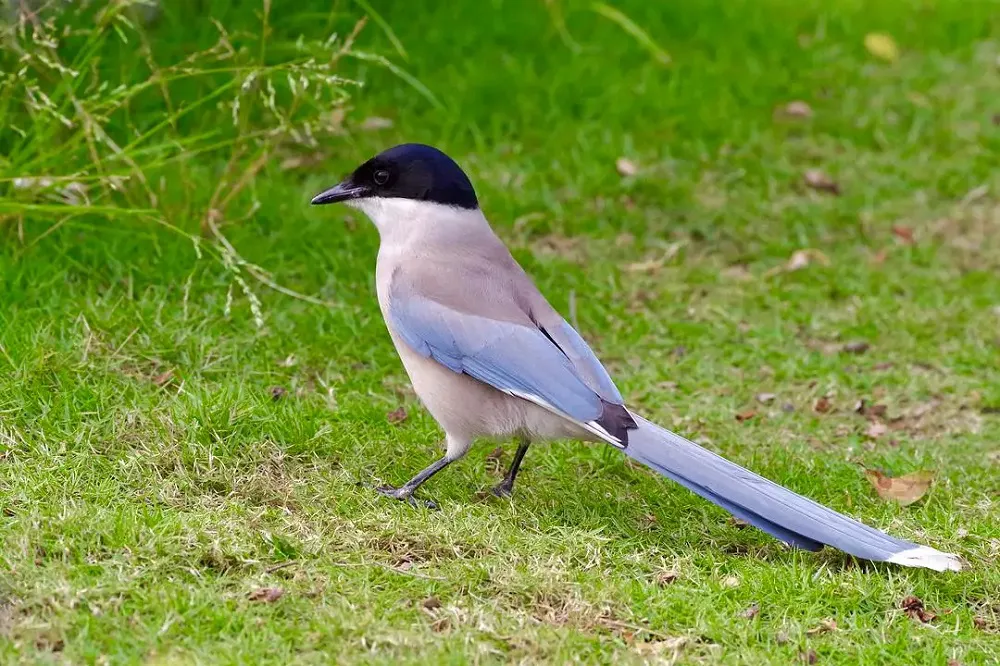Azure-winged magpies (Cyanopica cyanus) are captivating birds known for their striking appearance and intriguing behavior. Native to parts of eastern Asia, particularly China and Korea, these avian creatures have gained recognition for their distinctive azure-blue wings and sociable nature. This article delves into the intriguing characteristics and significance of the azure-winged magpie, shedding light on its habitat, physical attributes, behavior, and ecological role.
Habitat and Distribution:
Azure-winged magpies are predominantly found in the eastern regions of Asia, specifically in China, Korea, and parts of Japan. They are primarily forest-dwelling birds, often favoring deciduous and mixed forests, but can also inhabit parks, gardens, and farmland. These birds have successfully adapted to various environments, including both lowland areas and higher elevations of up to 2,500 meters (8,200 feet) above sea level.
Physical Characteristics:
The azure-winged magpie is a medium-sized bird, measuring around 31-35 centimeters (12-14 inches) in length and weighs around 70-110 g. It exhibits a fascinating color palette, characterized by its deep blue, glossy wings, contrasting with a jet-black head, neck, and tail. The bird’s face is adorned with a striking white patch, which accentuates its overall appearance. Additionally, azure-winged magpies possess a sturdy beak and strong legs, enabling them to forage efficiently.
Behavior and Social Structure:
One of the most notable traits of azure-winged magpies is their gregarious nature. These birds are highly social and tend to form large flocks, which can consist of several dozen individuals. Within these flocks, they exhibit a complex social hierarchy, with dominant individuals often leading and controlling access to resources such as food and nesting sites. The flocks engage in synchronized group displays, including acrobatic flight patterns, often accompanied by melodious calls.
Diet and Foraging Habits:
Azure-winged magpies are omnivorous birds, displaying a diverse diet. They primarily feed on insects, larvae, and other small invertebrates. However, they also consume fruits, berries, seeds, and occasionally small vertebrates such as lizards and small rodents. These birds have a unique foraging strategy, often utilizing their strong beaks to extract insects from tree bark or digging into the soil to uncover hidden prey.
Breeding:
During the breeding season, which usually takes place from March to June, the male Azure-winged magpie performs a courtship display by spreading its wings and tail feathers to show off its blue coloration. The female lays 4-7 eggs in a nest made of twigs and grass, which is built in a tree or bush. Both parents care for the eggs and chicks until they fledge at around 20-22 days old.
Ecological Role:
As active predators of insects and small invertebrates, azure-winged magpies play a vital role in controlling populations of pests, contributing to the overall balance of their ecosystems. Furthermore, their feeding habits facilitate seed dispersal, aiding in the propagation of plant species and fostering biodiversity. Their social behavior also serves as a form of defense against predators, as the larger flocks can collectively deter or confuse potential threats.
Conservation Status and Threats:
The conservation status of azure-winged magpies is currently listed as “Least Concern” by the International Union for Conservation of Nature (IUCN). However, localized threats such as habitat loss due to deforestation and urbanization can impact their populations. Additionally, the illegal wildlife trade poses a potential risk to these birds. Continuous monitoring and conservation efforts are necessary to ensure the long-term survival of azure-winged magpies and their habitats.
Conclusion:
The azure-winged magpie stands out as a charismatic and visually stunning bird species native to eastern Asia. Its azure-blue wings, sociable behavior, and ecological significance make it a fascinating subject of study and admiration. By understanding and appreciating these unique avian creatures, we can contribute to their conservation and the preservation of their natural habitats for generations to come.


 Facebook
Facebook  Instagram
Instagram  Youtube
Youtube 